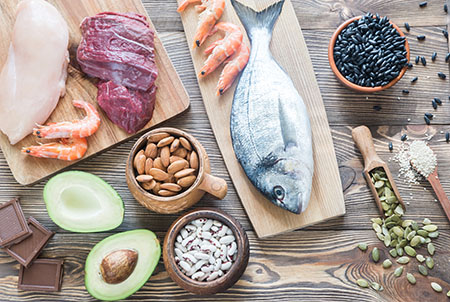Easily absorbed, organically bound zinc
- Organically bound zinc ensures high absorption
- Zinc gluconate with 15 mg of zinc in each tablet
- For skin, hair, nails, and bones
- Supports a normal acid-base metabolism
- Contributes to a normal immune function
- Manufactured under pharmaceutical control
| 1 tablet contains | % RDA* | ||
|---|---|---|---|
| Zinc | 15 mg | 150% |
* RDA = Recommended Dietary Allowance
Product Facts
Dosage
1 tablet daily for adults and children 11 years and older.
The recommended daily dose should not be exceeded.
Not recommended for pregnant women and children under one year unless recommended by a doctor.
Note
Can be taken with meals. However, for best utilization, take between meals and preferably before bedtime.
Content 90 tablets = 32 g
Ingredients
Glucose
Mineral: Zinc (zinc gluconate).
Bulking agent: Microcrystalline cellulose.
Anti-caking agent: Magnesium salts of fatty acids, silicon dioxide.
Storage
Dark, dry and at room temperature.
Keep out of reach of young children.
What is Bio-Zinc?
Bio-Zinc contains round, white tablets with clean, organically bound zinc in the form of zinc gluconate, which the body can easily absorb. The content of elemental zinc in each tablet is 15 mg, corresponding to 150% of the RDA. Bio-Zinc does not necessarily have to be taken with a meal.
What is zinc?
Zinc is an essential mineral and a trace element that is primarily found in cells and, to a lesser extent, in cellular fluid throughout the body. For instance, our white and red blood cells contain a substantial amount of zinc. Together with copper, zinc is an important constituent of the antioxidant enzyme superoxide dismutase (SOD).
Zinc has many different functions in the human body and supports around 200 different enzymes, including ones that are necessary for metabolizing nutrients and for translation and expression of genetic coding.
We contain 2-4 grams of zinc that is distributed throughout the body in all its cells, especially in muscles, bones, and skin. We do not store a definite amount of zinc and therefore need a continuous supply of the mineral. The highest concentrations of zinc in the body are found in the male prostate gland and in sperm cells.
The need for zinc is greatest during puberty, in pregnant and breastfeeding women, in vegetarians, in elderly people, in heavy drinkers, in people suffering from chronic stress, in people who take diuretics, and in people who sweat a lot.
Zinc is non-toxic in the recommended dosage, but the ingestion of high doses of zinc (10 to 30 times the RDA) for a prolonged period can cause a copper deficiency because zinc and copper are antagonists.
Concomitant intake of iron and zinc can affect the body's zinc uptake negatively. A high calcium intake can also reduce the uptake of zinc in the body.
 Good zinc sources
Good zinc sources
Zinc is found in a variety of foods. Good sources of the substance include:
- Oysters
- Meat
- Nuts
- Pumpkin seeds
- Whole grains
- Spices
- Spinach
Official claims
The European Food Safety Authority (EFSA) has evaluated the evidence behind zinc and has acknowledged the following claims:
- Contributes to normal acid-base metabolism
- Contributes to normal metabolism of carbohydrates
- Contributes to normal cognitive function
- Contributes to normal DNA synthesis
- Contributes to normal fertility and reproduction
- Contributes to normal macronutrient metabolism
- Contributes to normal metabolism of fatty acids
- Contributes to normal metabolism of vitamin A
- Contributes to normal protein synthesis
- Contributes to the maintenance of normal bones
- Contributes to the maintenance of normal hair
- Contributes to the maintenance of normal nails
- Contributes to the maintenance of normal skin
- Contributes to the maintenance of normal testosterone levels in the blood
- Contributes to the maintenance of normal vision
- Contributes to normal functioning of the immune system
- Contributes to the protection of cells from oxidative stress
- Plays a role in the process of cell specialization

